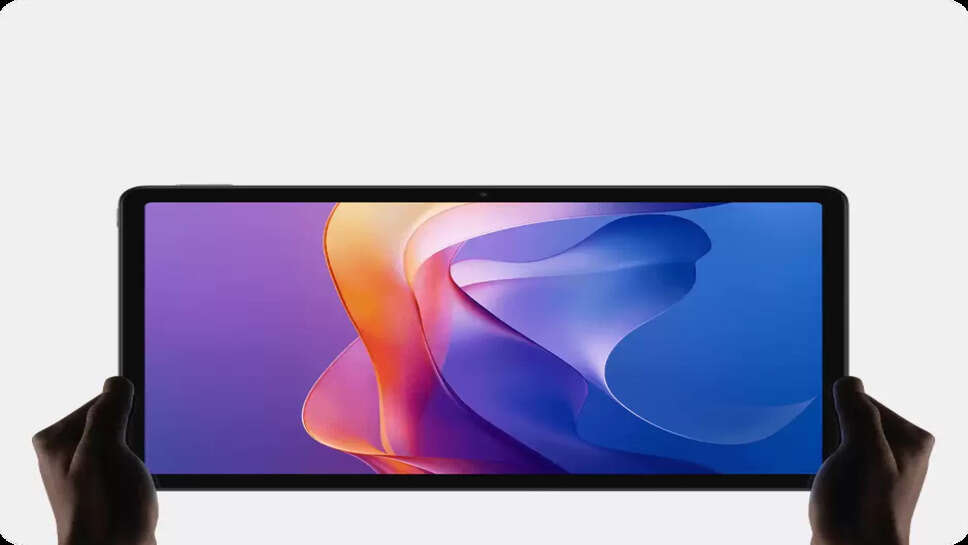Xiaomi Redmi Pad 2: The Affordable Tablet That Covers All the Essentials

When it comes to affordable tablets, Xiaomi has carved a name for itself by offering devices that strike a fine balance between cost and performance. The Redmi Pad 2 follows in the footsteps of its predecessor by targeting first-time tablet users, students, casual media consumers, and budget-conscious users. But in a world where entry-level devices are often riddled with compromises, does the Redmi Pad 2 actually deliver a usable experience? Here's a detailed breakdown.
Design & Build Quality: Light and Minimal
Right out of the box, the Redmi Pad 2 gives off a minimalist and refined look. The metallic matte finish on the back feels solid and resists fingerprints well. Despite being a budget device, it doesn’t look or feel cheap.
Weighing around 445 grams and with a 7.1mm thickness, it's surprisingly comfortable to hold, even for extended use. The bezels are reasonably slim without compromising grip, which is important for tablet ergonomics. Available in colors like Graphite Gray, Mint Green, and Moonlight Silver, the device aims to please different user preferences.
Display: Decent for the Price
The 10.95-inch IPS LCD display with a resolution of 2000 x 1200 pixels is one of the Redmi Pad 2’s highlights. While it's not OLED-level vibrant, it still offers rich colors and wide viewing angles for its segment. With a refresh rate of up to 90Hz, scrolling feels smoother than expected from a budget tablet.
Brightness levels max out at about 400 nits, making it suitable for indoor use and decent under shaded outdoor conditions. Watching YouTube, Netflix, or reading e-books is a comfortable experience, although HDR support is absent — a reasonable omission at this price point.
Performance: Enough for Everyday Tasks
Under the hood, the Redmi Pad 2 is powered by the Qualcomm Snapdragon 680 processor, paired with either 4GB or 6GB of RAM, and 64GB or 128GB of internal storage (expandable via microSD).
In real-world use, this setup is sufficient for web browsing, video streaming, attending online classes, reading PDFs, and light gaming. Switching between apps is generally smooth, though heavy multitasking will occasionally push the RAM limits. Games like Subway Surfers and Clash of Clans run well, but don't expect ultra-smooth graphics in intensive games like PUBG or Call of Duty.
Software: MIUI Optimized for Tablets
The tablet runs MIUI Pad 14 based on Android 13, which brings a tablet-optimized interface. This includes multi-window support, split-screen multitasking, floating windows, and a clean layout. The UI is polished, responsive, and tailored to the tablet form factor, which is a big plus.
Bloatware is present but minimal, and most of it can be uninstalled. Xiaomi also promises 2 years of Android updates and 3 years of security patches, which is fair for this category.
Battery Life: A Strong Performer
One of the most impressive aspects of the Redmi Pad 2 is its 8000mAh battery, which comfortably lasts 10–12 hours on moderate usage. Whether you're binge-watching, reading, or attending video calls, this tablet won’t need a recharge until the end of the day — and sometimes well into the next.
Charging is supported at 18W, and while that’s not blazing fast, it tops up the battery in about 2.5 hours, which is manageable considering the endurance it offers.
Audio & Media Experience
The Redmi Pad 2 features quad stereo speakers with support for Dolby Atmos. The audio quality is crisp, with decent stereo separation and enough volume for personal use or even small group video watching. For its price, this is one of the better audio setups on a tablet.
However, there is no 3.5mm headphone jack, so users will need to rely on Bluetooth or USB-C wired options for private listening.
Camera: Basic but Functional
You don’t buy a tablet for its camera, and the Redmi Pad 2 doesn’t pretend otherwise. It comes with an 8MP rear camera and a 5MP front camera. Both are strictly utilitarian, good enough for scanning documents or attending video calls in well-lit environments.
Low-light performance is poor, and there’s no LED flash, but that’s to be expected in this segment. Face Unlock via the front camera works reliably during the day, though it's not as secure as fingerprint unlock — which, incidentally, is missing from the device.
Connectivity & Ports
The tablet includes a USB Type-C port, supports dual-band Wi-Fi, Bluetooth 5.1, and comes in Wi-Fi only or LTE variants, depending on the region. There's also support for a microSD card up to 1TB, allowing flexibility for media storage and offline use.
No NFC, no GPS (on Wi-Fi models), and no fingerprint sensor, but again, these exclusions are not dealbreakers at this price point.
Who Is It For?
-
Students: Ideal for online classes, e-books, and note-taking.
-
First-Time Tablet Users: Clean interface, smooth experience, and not overwhelming.
-
Media Consumers: Good display and quad speakers make it great for watching content.
-
Elderly Users: Simple UI, long battery life, and large screen are easy to manage.
Pros and Cons at a Glance
Pros:
-
Great value for money
-
90Hz smooth display
-
Quad speakers with Dolby Atmos
-
Long battery life
-
MIUI Pad 14 feels optimized and fluid
Cons:
-
No fingerprint sensor
-
Basic cameras
-
Mid-tier performance not for heavy users
-
Slow charging
-
No headphone jack
Verdict: A Reliable Beginner Tablet That Delivers More Than Expected
The Xiaomi Redmi Pad 2 is a strong contender in the entry-level tablet market. For a starting price under ₹15,000–₹18,000 (depending on variant and region), it delivers a reliable, well-rounded experience that ticks the boxes for most casual users.
Whether you’re looking to buy your first tablet, gift it to a student or elder, or just want a secondary device for entertainment and light productivity — the Redmi Pad 2 stands out as a budget tablet that doesn’t feel like a compromise.
It’s not meant for gamers, power users, or creatives who need stylus support and flagship features. But for everything else? It simply works — and often better than expected.
